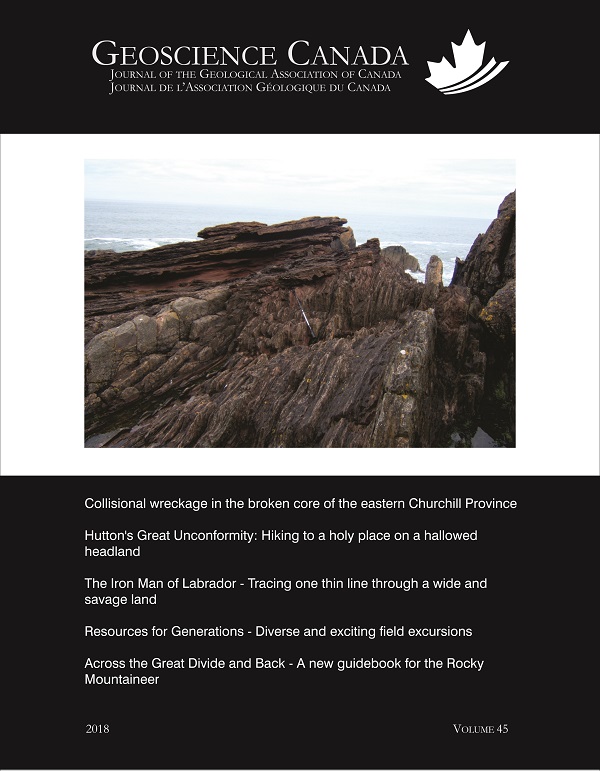Publié-e 2018-04-20
Comment citer
Résumé
In 1893–1894, Albert Peter Low of the Geological Survey of Canada, along with D.I.V. Eaton and four indigenous assistants explored the Labrador Peninsula, then perceived as one of the last great unexplored wilderness areas of North America. The expedition left Lake St. John (now Lac St. Jean) on June 17, 1893, canoeing across the northeastern edge of the North American continent, arriving at Fort Chimo (now Kuujjuaq) on August 27, 1893. They departed Fort Chimo by steamer for Rigolet on the Labrador coast and the Hudson Bay Company post at North West River in the fall of 1893. On March 6, 1894 the party started up the Grand (now Churchill) River continuing through large central lakes into the Ashuanipi river system in western Labrador, then out via the Attikonak River to the Romaine River and finally the Saint Jean river system to arrive at Mingan on the north shore of the St. Lawrence River on August 23, 1894. Low described their fifteen-month journey as having covered over 8700 km including 1600 km on foot, over 4700 km in canoe, 800 km by dog team and 1600 km by steamer. The report from the expedition provides a compendium on the natural history of the region as well as the first geological maps. In terms of economic and scientific results, the greatest was documentation of the vast iron ore deposits of western Labrador; a world-class mining district that has been producing for sixty-three years since 1954. Low’s account also provides details on the essence of such an epic journey, which stands as a classic in the annals of Canadian geological surveying.
RÉSUMÉ
En 1893–1894, Albert Peter Low de la Commission géologique du Canada, accompagné du D.I.V. Eaton et quatre assistants autochtones ont exploré la péninsule du Labrador, alors perçue comme l'une des dernières grandes étendues sauvages inexplorées d’Amérique du Nord. L’équipe a quitté le Lake St. John (aujourd'hui le lac Saint-Jean) le 17 juin 1893, a traversé la bordure nord-est du continent nord-américain en canoë, et est arrivé à Fort Chimo (aujourd'hui Kuujjuaq) le 27 août 1893. À l'automne de 1893, ils ont quitté Fort Chimo à bord d'un vapeur pour Rigolet, sur la côte du Labrador, et le poste de la Compagnie de la Baie d'Hudson sur la rivière North West. Le 6 mars 1894, les membres de l'équipe ont remonté la rivière Grand (aujourd'hui Churchill), puis à travers les grands lacs centraux jusqu'au bassin de la rivière Ashuanipi, dans l'ouest du Labrador, puis, par la rivière Attikonak jusqu' à la rivière Romaine et, enfin, le réseau de la rivière Saint-Jean jusqu’à Mingan, sur la rive nord du fleuve Saint-Laurent, le 23 août 1894. L’excursion décrite par Low a duré quinze mois et parcouru plus de 8700 km dont 1600 km à pied, plus de 4700 km en canoë, 800 km en attelage de chiens et 1600 km en bateau à vapeur. Le rapport de l'expédition constitue un recueil sur l'histoire naturelle de la région ainsi que des premières cartes géologiques. En ce qui concerne les répercussions économiques et scientifiques, la plus importante en a été la documentation des vastes gisements de minerai de fer de l'ouest du Labrador, un district minier de classe mondiale, en production pendant soixante-trois ans depuis 1954. Le récit de Low fournit également des détails sur le caractère épique d’une telle expédition, laquelle est un classique dans les annales de la Commission géologique du Canada.
